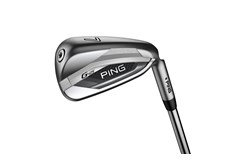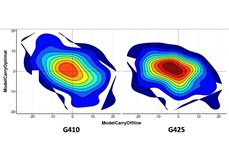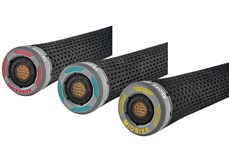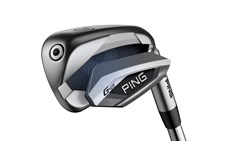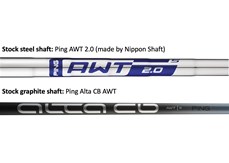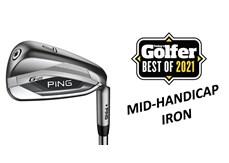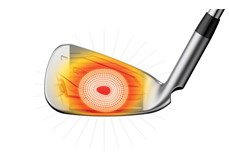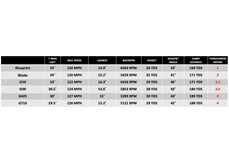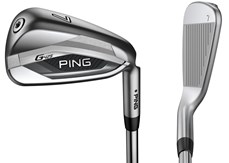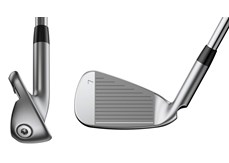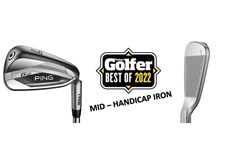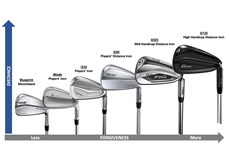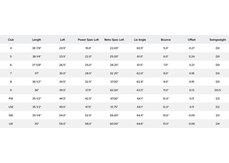Ping G425 Iron Review
Published: Last updated:
-
At a glance
- TG Rating
- Owner Rating
- RRP £129.00
What we say...
The Ping G425 irons blend distance with forgiveness to create a brilliant game-improvement iron that’s perfect for mid-handicap golfers.
Evolution has very much been the story with Ping G irons since the original Ping G2 was launched back in 2004.
Ping are well aware that not many golfers upgrade their irons every season. In fact, the average is an upgrade every eight years.
Ping use this knowledge to focus on increasing performance year after year by making small gains from as many design parameters as possible. It means each new model is better than the last, but, most importantly, if you haven’t upgraded your irons for a few years, it means the new model will be a marked improvement over the set in your bag.
RELATED: Everything you need to know about the Ping G425 drivers

For example, the Ping G425 irons offer a 3% MOI (moment of inertia) gain over the previous Ping G410 irons. That’s not to be sniffed at, but add that to the 8% gain from the G400 to G410 and you start to see why it might be time to upgrade if your set is a little older.
If you own a set of Ping G400 or G410 irons, you have a great set of irons and you’re unlikely to see massive gains by switching to the new Ping G425. If, however, you are using a set of Ping G, G30 or even G25 irons, you will see significant gains by upgrading to the Ping G425.
Let’s look at how Ping have further improved their iron offering with the G425…
RELATED: Tested – Which Ping iron is right for me?

Ping G425 iron
RRP: £129 (s) £139 (g) per club
Availability: 4 – LW
Stock shaft: Ping AWT 2.0 (s) Ping Alta CB (g) with 7 after-market upgrades available at no extra charge.
7-iron loft: 30˚
WATCH: Should you play the Ping G425 Iron?
What you need to know about the Ping G425 iron
Distance and forgiveness
Ping see the G425 as a distance with forgiveness iron. If it’s ultimate ball speed and distance you want, check out the Ping G710 with its hollow body and fast face.
Plenty of sleepless nights have been spent working out how to create a distance iron that doesn’t behave like a strong lofted iron. Many golfers want extra distance, but they also want shots that launch high and land steep to make them actually playable on a golf course, not just impressive on a launch monitor.
RELATED: Does your game suit strong loft irons?
Variable face thickness (VFT) just like a driver
Variable face thickness is nothing new on irons, Ping themselves have used COR-EYE tech on G irons since the GMax back in 2015. But what’s different about the G425 is how the variable face thickness pattern has been reshaped to reflect that of a driver. Ping reckon that means you get more face flex and ball speed from wherever shots hit the face.

Fast and Flexible
One of the reasons golfers with sets of G25 or G30 irons will see good gains from the Ping G425 irons is because the construction methods between the two are so very different. Take an early model and cut it in half and you’ll quickly spot how there’s no under-cut topline or cascading sole design.
They’re the bits that thin out crucial areas where the face meets the sole and body.
Using that construction method, Ping say they are able to get a 7-iron to launch as high as an 8-iron but with the ball speed and carry distance of a 6-iron.
RELATED: Everything you need to know about Ping’s G425 Spinsistency hybrid

Squeezed into a smaller package
Plenty of golfers have called the design of Ping G irons ‘boxy’ over the years and it’s something the company have looked at addressing head on with the last two generations.
The new head design not only looks smaller and more attractive, it comes with performance benefits, too. By removing weight from behind the impact zone (where Ping used to position a custom tuning port) the face can flex more freely, increasing ball speed.
And because the mass is relocated to the extremities of the toe and inside the shaft tip, there’s more forgiveness on offer as well.
RELATED: Love KBS iron shafts? Should you try the new KBS TD driver shaft?

Many materials
Wind the clock back to the Eye 2 iron that put Ping on the map, and it was a simple one-piece, one-material, stainless steel head. Today that’s just not the case.
The Ping G425 cavity badge has an aluminium cover to give a super sophisticated look.
Underneath that cover there’s super-efficient ABS and vibration dampening tape. They work so well that the feel and sound of the Ping G425 are very close to Ping’s most-played iron on tour, the Ping i210, a firm favourite among good golfers who place an emphasis on the feel they get from their irons.
RELATED: Which KBS iron shaft suits you?
WATCH: Best 2022 Mid-Handicap Iron video
RELATED Best 2021 Mid-Handicap Irons
Premium wedges
Lots of forged irons have launched in 2020 and if there’s a trend running through the tour player models, it’s how they all come with CNC Milled face grooves. That’s because tour players demand precision.
Ping recognise accuracy with wedges is really important to club golfers, too, so the new Ping G425 wedges come with CNC Milled face grooves (with the same spec as the Ping Glide 3.0) which is unheard of in this area of the industry.
For many it will mean a decision around ditching specialist wedges for a complete set of G425’s, but then you also get a great wedge fitting at the same time.
RELATED: How good are the ‘affordable’ PXG 0211 XCOR2 irons?

What’s the gain?
Ping say golfers can expect a greater number of shots to hit their target with a tighter dispersion, both in terms of left and right, as well as short and long.
That greater distance control and accuracy is combined with easier to flight long irons and more controllable short irons
RELATED: ROBOT TESTED – Which golf ball suits my game?
How do the G425 iron shaft options compare?

See other Ping Iron reviews here
Ping Blueprint / Ping iBlade / Ping i210 / Ping i500 / Ping G710
Where does the G425 sit within Ping’s iron range?

Verdict: Ping G425 iron
It’s important to remember that Ping cavity-back irons have a very long history. Over the years their models have changed the game for tour pros and club golfers alike.
Ping have been accused of putting function over form when it comes to iron design many times, but over the last 2-3 generations more focus than ever has been placed on making the G cosmetically more desirable. We reckon the G425 is the best looking mid-handicap iron Ping have ever produced.
We love how the long irons still have plenty of offset to help golfers launch shots from the turf, but the big improvement is how they morph into pretty compact and less offset short irons and wedges. But, thanks to the toe weights, you lose zero forgiveness over previous, larger models.

With a 7-iron loft of 30° it’s highly likely if you’re putting the G425 up against the strongest distance irons on the market (they often have 27° 7-iron lofts) then you may well find yourself coming up a few yards short.
But bear in mind Ping insist a 7-iron needs to launch, fly and land like a 7-iron, so when you’re testing the competition keep an eye on how much spin, height and descent angle is lost to post extra ball speed and carry distance on the launch monitor. Reducing those three factors makes it harder to stop your ball on the green when out on the course.
If distance is a priority, don’t be afraid to look at Ping’s Power Spec option. Ping will happily adjust the lofts of the whole set by 1.5°-2°, which delivers extra ball speed and carry distance. We like this idea a lot, especially when it’s combined with the lightweight, soft-tipped, high-launch True Temper Elevate after-market shaft, available with no upcharge.

Feel tends to be much less of a factor for mid-handicap players when buying a new set of irons, but thanks to a new aluminium cavity badge, with an ABS insert and dampening tape, the G425 sounds very much like their most played tour iron, the i210. Our test pro definitely felt there was a difference between the pair, but golfers who’ll buy this model probably won’t notice and of course any difference in feel means nothing in terms of actual performance.

Ping G irons have been favourites here at TG for years and that absolutely doesn’t change with the G425. If anything, the new model builds on its previous success thanks to new additions like incorporating CNC Milled faces and grooves into the wedges. It means you now get the same level of stopping performance on G425 wedges as one of the Ping Glide 3.0 specialist wedges.

And if you still need a deal-clincher, don’t forget every Ping G425 product comes with an Arccos shot-tracker in the grip, plus a 90-day subscription to access your performance data. History says golfers who use the tech not only improve on average by over four shots a round, but you also get a better understanding of your own strengths and weaknesses and any data you create is highly likely to influence the fitting of any future clubs you buy.
RELATED: Which Lamkin grip is best for me?
How does the G425 compare to Ping’s other irons in terms of data?

Ping G425 iron specs

READ NEXT: WITB – Ping’s six-time major player Marty Jertson

Review written by: Simon Daddow
Job title: Today’s Golfer – Equipment Editor
Product Information
Ping G425 Iron
RRP: £129 (s) £139 (g) per club
Availability: 4 - LW
Stock shaft: Ping AWT 2.0 (s) Ping Alta CB Slate (g)
After market no upcharge upgrade shaft options:
Nippon N.S Pro Modus3
True Temper Elevate 95
KBS Tour
True Temper Dynamic Gold 105
True Temper Dynamic Gold 120
True Temper Dynamic Gold
Project X LZ
Stock grip: Arccos GP Lite 360 Tour Velvet
7-Iron loft: 30°
Category / Forgiveness rating: Game Improver / 3.5 (See more category 3.5 irons here)
